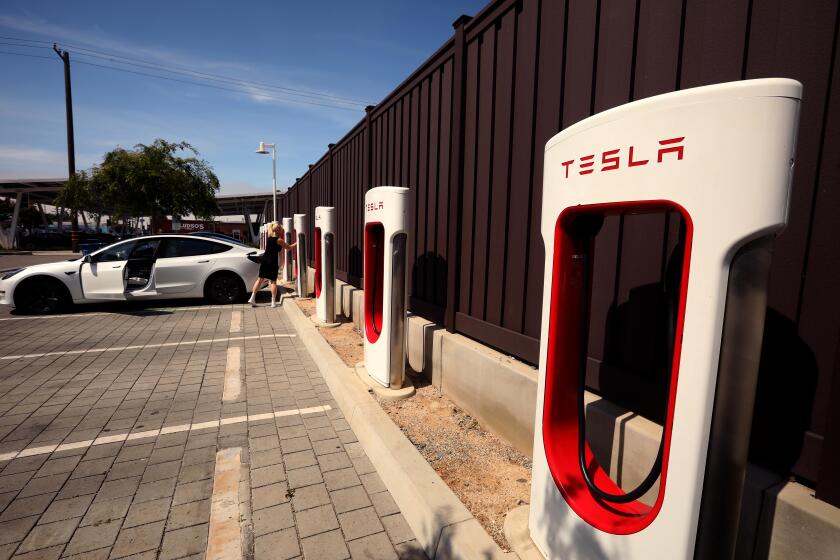Tony Briscoe is an environmental reporter with the Los Angeles Times. His coverage focuses on the intersection of air quality and environmental health. Prior to joining The Times, Briscoe was an investigative reporter for ProPublica in Chicago and an environmental beat reporter at the Chicago Tribune.
1
A Tesla manufacturing plant in California has come under fire from local air regulators who say the electric carmaker has frequently released illegal amounts of air pollution.
The Tesla manufacturing and assembly plant in Fremont has been cited for more than 110 air quality violations since 2019 — more than twice any other major facility in the Bay Area. Air district officials say the facility’s two painting shops have been the source of uncontrolled releases of smog-forming pollution and toxic chemicals over the years.
“Tesla’s repeated failure to comply with air quality regulations is unacceptable and increases the risk to public health,” Philip Fine, the air district’s executive officer, said in a statement.
The Bay Area Air Quality Management District is now seeking an order from the agency’s quasi-judicial hearing board to compel Tesla to correct the issues.
Aggressive and impactful reporting on climate change, the environment, health and science.
It’s an ironic turn of events for Tesla — the United States’ biggest manufacturer of electric cars is facing accusations of worsening air quality and endangering public health. The violations are another black eye for the company’s co-founder and chief executive, Elon Musk, who has declared “Tesla has done more to help the environment than all other companies combined.”
Tesla’s Freemont plant, however, has previously been cited by the U.S. Environmental Protection Agency for violations involving toxic fumes emanating from leaking and improperly sealed paints, primers and automotive fluids.
Tesla representatives couldn’t be reached for comment.
The Fremont plant was Tesla’s first factory, where the first Model S rolled off the assembly line in 2012. It originally opened in 1962 as a General Motors assembly plant.
Non-Tesla EV drivers will want to double-check their routes before planning a road trip that relies on the Supercharger network. Not all California locations are open to other makes of EVs yet.
The air district says frequent equipment breakdowns and improper releases have occurred in Tesla’s paint shops, which include a series of spray-painting booths and ovens that speed the drying process.
When the system is working properly, the paint shops collect hazardous air pollution and essentially burn off harmful chemicals. But frequent equipment failures have resulted in pollutants being emitted into the atmosphere.
In some cases, the air district says these releases were avoidable, but Tesla has programmed its operations to automatically shut down its pollution control system and illegally vent harmful emissions in some situations.
In each of Tesla’s air quality violations, it has released as much as 750 pounds of illegal pollution, according to air district estimates.
The air district wants a third-party engineering firm to investigate the incidents and propose fixes. The proposed oversight will be the subject of a yet-to-be-scheduled meeting.
California has ambitious climate goals, including a pledge to ban the sale of new gasoline- and diesel-powered cars and light trucks by 2035.







